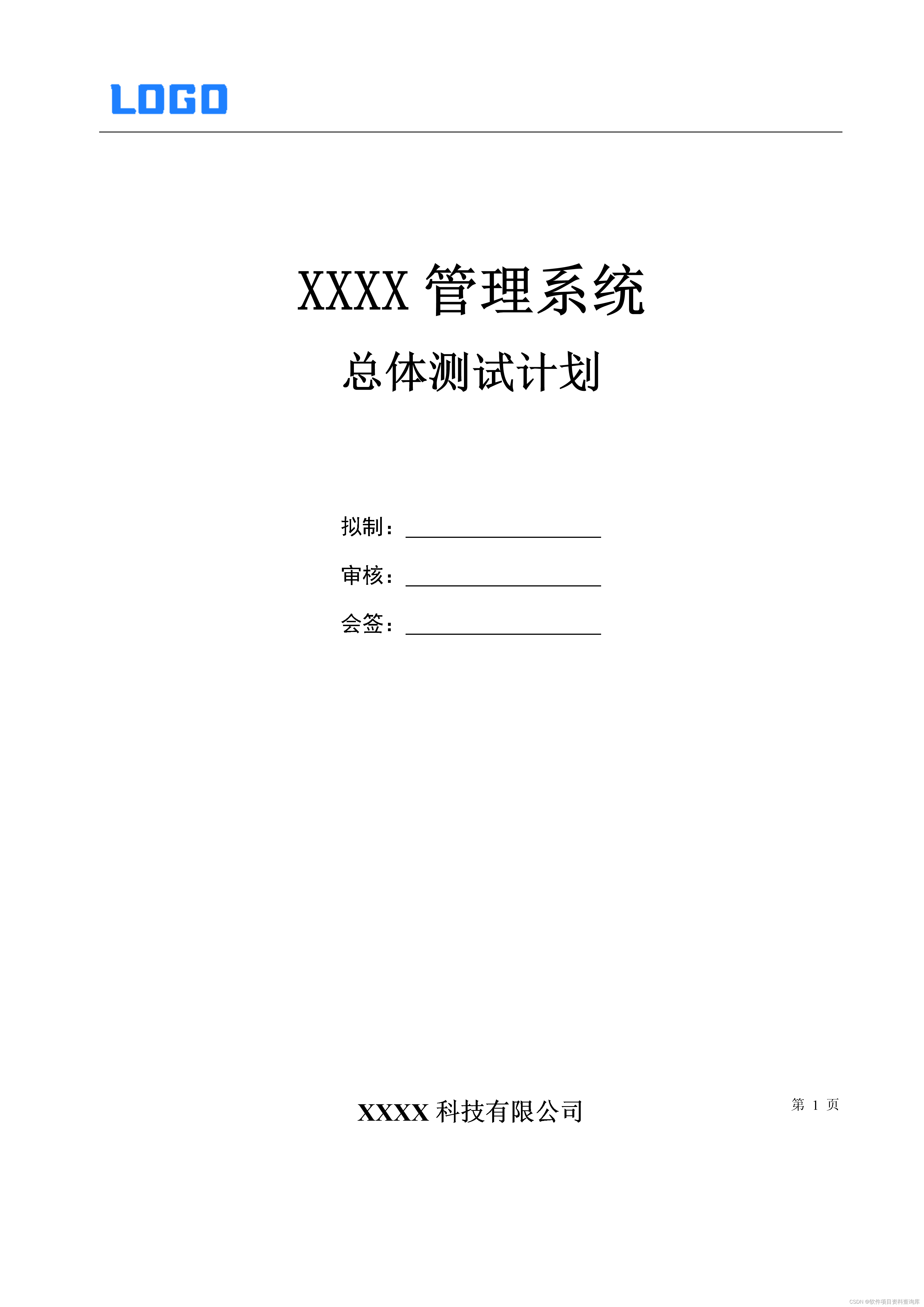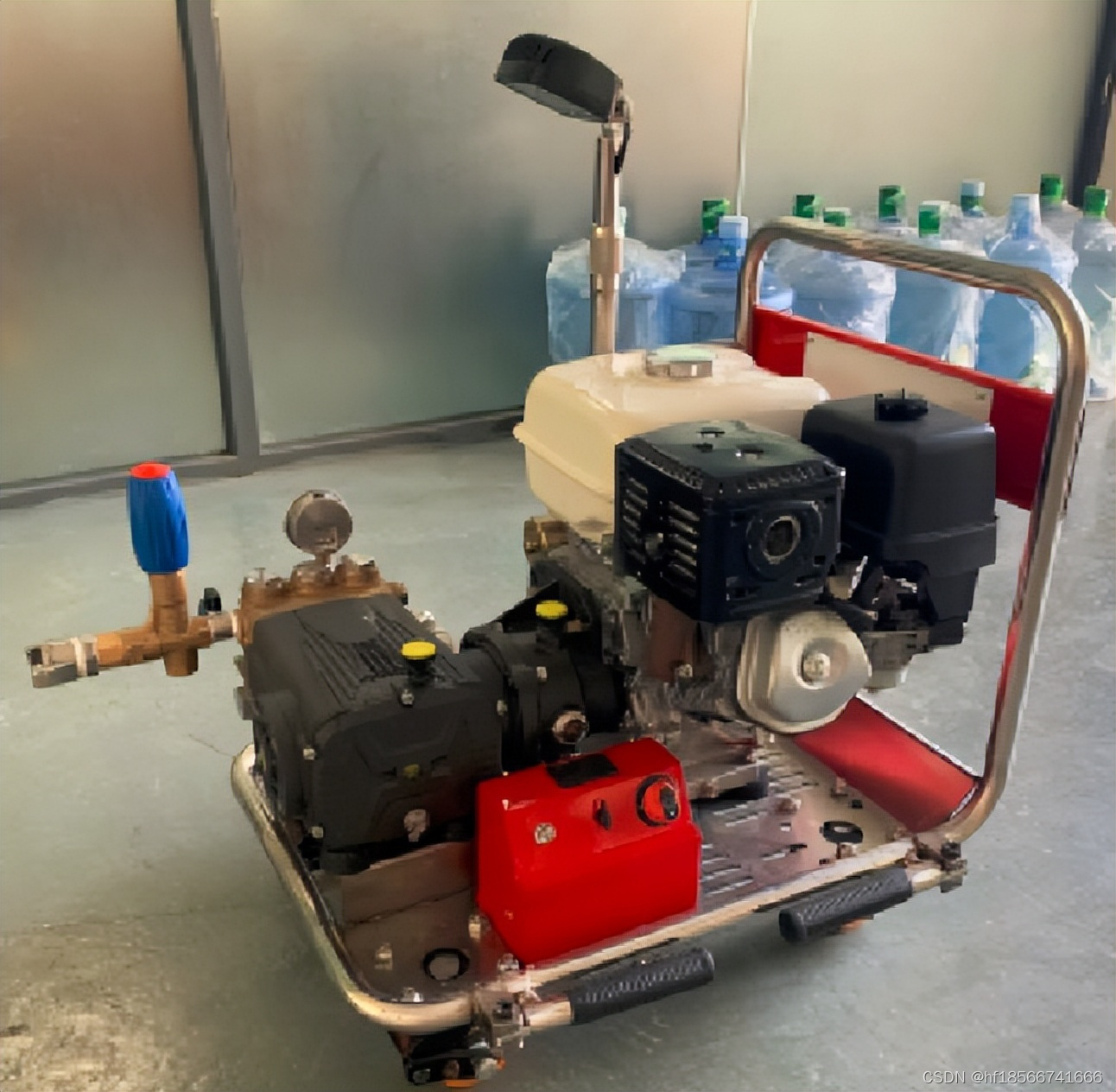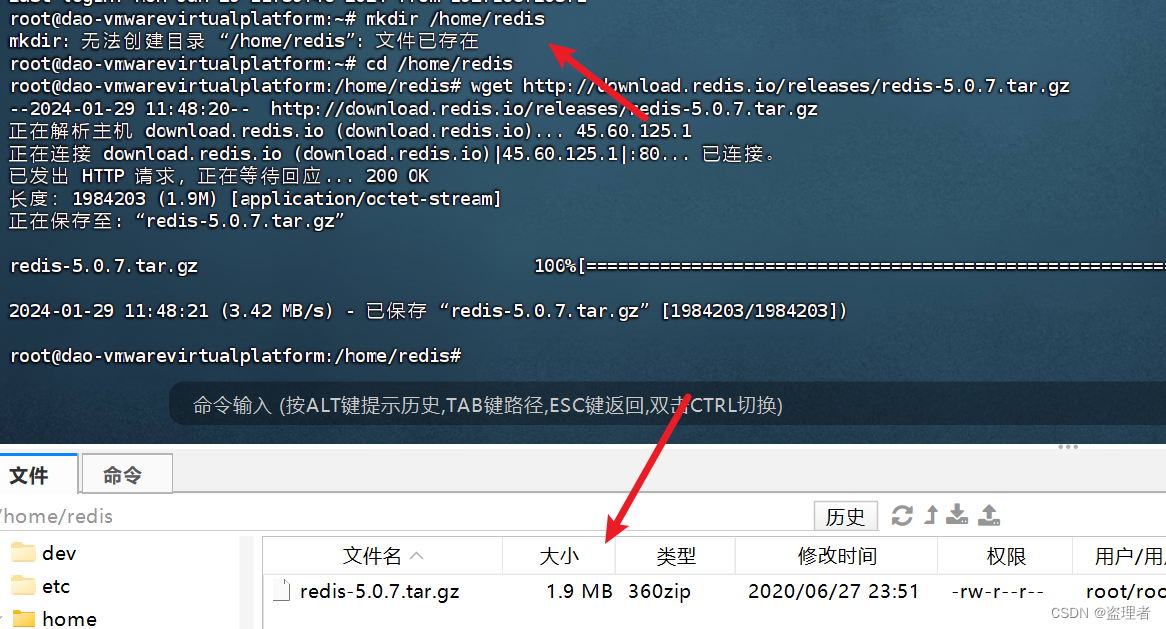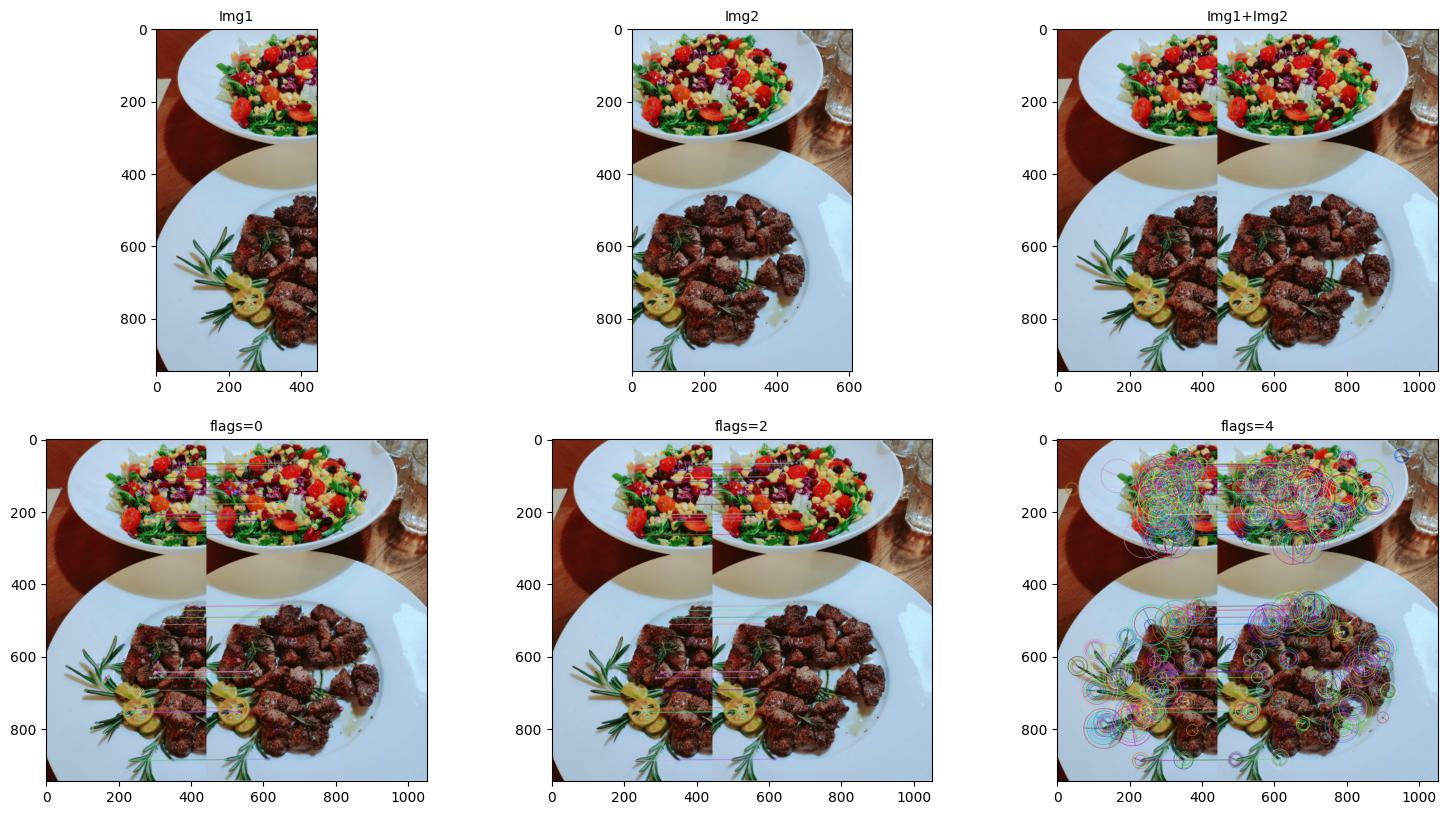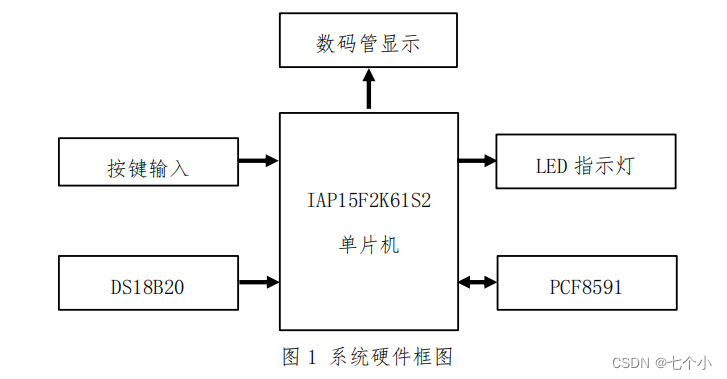算法流程
输入:约束决策树生长参数(最大深度,节点最小样本数,可选),训练集(特征值离散或连续,标签离散)。
输出:决策树。
过程:每次选择信息增益最大的属性决策分类,直到当前节点样本均为同一类,或者信息增益过小。
信息增益
设样本需分为 K K K 类,当前节点待分类样本中每类样本的个数分别为 n 1 , n 2 , … , n K n_1, n_2, …, n_K n1,n2,…,nK,则该节点信息熵为
I ( n 1 , n 2 , … , n K ) = − ∑ i = 1 K n i ∑ j = 1 K n j log 2 n i ∑ j = 1 K n j I(n_1, n_2, …, n_K) = -\sum_{i=1}^K \frac{n_i}{\sum_{j=1}^K n_j} \log_2 \frac{n_i}{\sum_{j=1}^K n_j} I(n1,n2,…,nK)=−i=1∑K∑j=1Knjnilog2∑j=1Knjni
设属性 A A A 共 v v v 种取值,当前节点样本按属性 A A A 决策分类为 v v v 个子节点,第 i i i 个子节点待分类样本中每类样本的个数分别为 n i 1 , n i 2 , … , n i K n_{i1}, n_{i2}, …, n_{iK} ni1,ni2,…,niK,则父节点按属性 A A A 决策分类的类信息熵为
E ( A ) = ∑ i = 1 v ∑ j = 1 K n i j ∑ j = 1 K n j I ( n i 1 , n i 2 , … , n i K ) E(A) = \sum_{i=1}^v \frac{\sum_{j=1}^K n_{ij}}{\sum_{j=1}^K n_j} I(n_{i1}, n_{i2}, …, n_{iK}) E(A)=i=1∑v∑j=1Knj∑j=1KnijI(ni1,ni2,…,niK)
由此计算当前节点在属性 A 上的信息增益为
G a i n ( A ) = I ( n 1 , n 2 , … , n K ) − E ( A ) Gain(A) = I(n_1, n_2, …, n_K) - E(A) Gain(A)=I(n1,n2,…,nK)−E(A)
决策树学习过程中可能出现的问题与解决方法
不相关属性(irrelevant attribute),属性与类分布相独立。此情况下信息增益过小,可以终止决策,将当前节点标签设为最高频类。
不充足属性(inadequate attribute),不同类的样本有完全相同特征。此情况下信息增益为 0 0 0,可以终止决策,将当前节点标签设为最高频类。
未知属性值(unknown value),数据集中某些属性值不确定。可以通过预处理剔除含有未知属性值的样本或属性。
过拟合(overfitting),决策树泛化能力不足。可以约束决策树生长参数。
空分支(empty branch),学习过程中某节点样本数为 0 0 0, v ≥ 3 v≥3 v≥3 才会发生。可以将当前节点标签设为父节点的最高频类。
参考代码如下(仅能处理离散属性值状态):
import numpy as np
class ID3:
def __init__(self, max_depth = 0, min_samples_split = 0):
self.max_depth, self.min_samples_split = max_depth, min_samples_split
def __EI(self, *n):
n = np.array([i for i in n if i > 0])
if n.shape[0] <= 1:
return 0
p = n / np.sum(n)
return -np.dot(p, np.log2(p))
def __Gain(self, A: np.ndarray):
return self.__EI(*np.sum(A, axis = 0)) - np.average(np.frompyfunc(self.__EI, A.shape[1], 1)(*A.T), weights = np.sum(A, axis = 1))
def fit(self, X: np.ndarray, y):
self.DX, (self.Dy, yn) = [np.unique(X[:, i]) for i in range(X.shape[1])], np.unique(y, return_inverse = True)
self.Dy: np.ndarray
self.value = []
def fitcur(n, h, p = 0):
self.value.append(np.bincount(yn[n], minlength = self.Dy.shape[0]))
r: np.ndarray = np.unique(y[n])
if r.shape[0] == 0: # Empty Branch
return p
elif r.shape[0] == 1:
return yn[n[0]]
elif self.max_depth > 0 and h >= self.max_depth or n.shape[0] <= self.min_samples_split: # Overfitting
return np.argmax(np.bincount(yn[n]))
else:
P = [[n[np.where(X[n, i] == j)[0]] for j in self.DX[i]] for i in range(X.shape[1])]
G = [self.__Gain(A) for A in [np.array([[np.where(y[i] == j)[0].shape[0] for j in self.Dy] for i in p]) for p in P]]
m = np.argmax(G)
if(G[m] < 1e-9): # Inadequate attribute
return np.argmax(np.bincount(yn[n]))
return (m,) + tuple(fitcur(i, h + 1, np.argmax(np.bincount(yn[n]))) for i in P[m])
self.tree = fitcur(np.arange(X.shape[0]), 0)
def predict(self, X):
def precur(n, x):
return precur(n[1 + np.where(self.DX[n[0]] == x[n[0]])[0][0]], x) if isinstance(n, tuple) else self.Dy[n]
return np.array([precur(self.tree, x) for x in X])
def visualize(self, header):
i = iter(self.value)
def visval():
v = next(i)
print(' (entropy = {}, samples = {}, value = {})'.format(self.__EI(*v), np.sum(v), v), end = '')
def viscur(n, h, c):
for i in h[:-1]:
print('%c ' % ('│' if i else ' '), end = '')
if len(h) > 0:
print('%c── ' % ('├' if h[-1] else '└'), end = '')
print('[%s] ' % c, end = '')
if isinstance(n, tuple):
print(header[n[0]], end = '')
visval()
print()
for i in range(len(n) - 1):
viscur(n[i + 1], h + [i < len(n) - 2], str(self.DX[n[0]][i]))
else:
print(self.Dy[n], end = '')
visval()
print()
viscur(self.tree, [], '')
连续属性值的离散化
对于某个连续属性,取训练集中所有属性值的相邻两点中点生成界点集,按每个界点将当前节点样本分为 2 2 2 类,算出界点集中最大信息增益的界点。
在上文代码的基础上加以改动,得到能处理连续属性值状态的代码如下:
import numpy as np
class ID3:
def __init__(self, max_depth = 0, min_samples_split = 0):
self.max_depth, self.min_samples_split = max_depth, min_samples_split
def __EI(self, *n):
n = np.array([i for i in n if i > 0])
if n.shape[0] <= 1:
return 0
p = n / np.sum(n)
return -np.dot(p, np.log2(p))
def __Gain(self, A: np.ndarray):
return self.__EI(*np.sum(A, axis = 0)) - np.average([self.__EI(*a) for a in A], weights = np.sum(A, axis = 1))
def fit(self, X: np.ndarray, y):
self.c = np.array([(np.all([isinstance(j, (int, float)) for j in i])) for i in X.T])
self.DX, (self.Dy, yn) = [np.unique(X[:, i]) if not self.c[i] else None for i in range(X.shape[1])], np.unique(y, return_inverse = True)
self.Dy: np.ndarray
self.value = []
def Part(n, a):
if self.c[a]:
u = np.sort(np.unique(X[n, a]))
if(u.shape[0] < 2):
return None
v = np.array([(u[i - 1] + u[i]) / 2 for i in range(1, u.shape[0])])
P = [[n[np.where(X[n, a] < i)[0]], n[np.where(X[n, a] >= i)[0]]] for i in v]
m = np.argmax([self.__Gain([[np.where(y[i] == j)[0].shape[0] for j in self.Dy] for i in p]) for p in P])
return v[m], P[m]
else:
return None, [n[np.where(X[n, a] == i)[0]] for i in self.DX[a]]
def fitcur(n: np.ndarray, h, p = 0):
self.value.append(np.bincount(yn[n], minlength = self.Dy.shape[0]))
r: np.ndarray = np.unique(y[n])
if r.shape[0] == 0: # Empty Branch
return p
elif r.shape[0] == 1:
return yn[n[0]]
elif self.max_depth > 0 and h >= self.max_depth or n.shape[0] <= self.min_samples_split: # Overfitting
return np.argmax(np.bincount(yn[n]))
else:
P = [Part(n, i) for i in range(X.shape[1])]
G = [self.__Gain([[np.where(y[i] == j)[0].shape[0] for j in self.Dy] for i in p[1]]) if p != None else 0 for p in P]
m = np.argmax(G)
if(G[m] < 1e-9): # Inadequate attribute
return np.argmax(np.bincount(yn[n]))
return ((m, P[m][0]) if self.c[m] else (m,)) + tuple(fitcur(i, h + 1, np.argmax(np.bincount(yn[n]))) for i in P[m][1])
self.tree = fitcur(np.arange(X.shape[0]), 0)
def predict(self, X):
def precur(n, x):
return precur(n[(2 if x[n[0]] < n[1] else 3) if self.c[n[0]] else (1 + np.where(self.DX[n[0]] == x[n[0]])[0][0])], x) if isinstance(n, tuple) else self.Dy[n]
return np.array([precur(self.tree, x) for x in X])
def visualize(self, header):
i = iter(self.value)
def visval():
v = next(i)
print(' (entropy = {}, samples = {}, value = {})'.format(self.__EI(*v), np.sum(v), v), end = '')
def viscur(n, h, c):
for i in h[:-1]:
print('%c ' % ('│' if i else ' '), end = '')
if len(h) > 0:
print('%c── ' % ('├' if h[-1] else '└'), end = '')
print('[%s] ' % c, end = '')
if isinstance(n, tuple):
print(header[n[0]], end = '')
visval()
print()
if self.c[n[0]]:
for i in range(2):
viscur(n[2 + i], h + [i < 1], ('< ', '>= ')[i] + str(n[1]))
else:
for i in range(len(n) - 1):
viscur(n[1 + i], h + [i < len(n) - 2], str(self.DX[n[0]][i]))
else:
print(self.Dy[n], end = '')
visval()
print()
viscur(self.tree, [], '')
实验测试
实验使用数据集如下:
Play tennis 数据集(来源:kaggle):离散属性
Mushroom classification 数据集(来源:kaggle):离散属性
Carsdata 数据集(来源:kaggle):连续属性
Iris 数据集(来源:sklearn.datasets):连续属性
其中 play_tennis.csv 内容如下:
| day | outlook | temp | humidity | wind | play |
|---|---|---|---|---|---|
| D1 | Sunny | Hot | High | Weak | No |
| D2 | Sunny | Hot | High | Strong | No |
| D3 | Overcast | Hot | High | Weak | Yes |
| D4 | Rain | Mild | High | Weak | Yes |
| D5 | Rain | Cool | Normal | Weak | Yes |
| D6 | Rain | Cool | Normal | Strong | No |
| D7 | Overcast | Cool | Normal | Strong | Yes |
| D8 | Sunny | Mild | High | Weak | No |
| D9 | Sunny | Cool | Normal | Weak | Yes |
| D10 | Rain | Mild | Normal | Weak | Yes |
| D11 | Sunny | Mild | Normal | Strong | Yes |
| D12 | Overcast | Mild | High | Strong | Yes |
| D13 | Overcast | Hot | Normal | Weak | Yes |
| D14 | Rain | Mild | High | Strong | No |
Play tennis 数据集上的测试
默认属性二分类测试,代码如下:
import pandas as pd
class Datasets:
def __init__(self, fn):
self.df = pd.read_csv('Datasets\\%s' % fn).map(lambda x: x.strip() if isinstance(x, str) else x)
self.df.rename(columns = lambda x: x.strip(), inplace = True)
def getData(self, DX, Dy, drop = False):
dfn = self.df.loc[~self.df.eq('').any(axis = 1)].apply(pd.to_numeric, errors = 'ignore') if drop else self.df
return dfn[DX].to_numpy(dtype = np.object_), dfn[Dy].to_numpy(dtype = np.object_)
# play_tennis.csv
a = ['outlook', 'temp', 'humidity', 'wind']
X, y = Datasets('play_tennis.csv').getData(a, 'play')
dt11 = ID3()
dt11.fit(X, y)
dt11.visualize(a)
print()
结果如下:
outlook (entropy = 0.9402859586706311, samples = 14, value = [5 9])
├── [Overcast] Yes (entropy = 0, samples = 4, value = [0 4])
├── [Rain] wind (entropy = 0.9709505944546686, samples = 5, value = [2 3])
│ ├── [Strong] No (entropy = 0, samples = 2, value = [2 0])
│ └── [Weak] Yes (entropy = 0, samples = 3, value = [0 3])
└── [Sunny] humidity (entropy = 0.9709505944546686, samples = 5, value = [3 2])
├── [High] No (entropy = 0, samples = 3, value = [3 0])
└── [Normal] Yes (entropy = 0, samples = 2, value = [0 2])
不充足属性测试
更换属性三分类,不充足属性测试,代码如下:
# play_tennis.csv for inadequate attribute test and class > 2
a = ['temp', 'humidity', 'wind', 'play']
X, y = Datasets('play_tennis.csv').getData(a, 'outlook')
dt12 = ID3(10)
dt12.fit(X, y)
dt12.visualize(a)
print(dt12.predict([['Cool', 'Normal', 'Weak', 'Yes']]))
print()
结果如下:
play (entropy = 1.5774062828523454, samples = 14, value = [4 5 5])
├── [No] temp (entropy = 0.9709505944546686, samples = 5, value = [0 2 3])
│ ├── [Cool] Rain (entropy = 0, samples = 1, value = [0 1 0])
│ ├── [Hot] Sunny (entropy = 0, samples = 2, value = [0 0 2])
│ └── [Mild] wind (entropy = 1.0, samples = 2, value = [0 1 1])
│ ├── [Strong] Rain (entropy = 0, samples = 1, value = [0 1 0])
│ └── [Weak] Sunny (entropy = 0, samples = 1, value = [0 0 1])
└── [Yes] temp (entropy = 1.5304930567574826, samples = 9, value = [4 3 2])
├── [Cool] wind (entropy = 1.584962500721156, samples = 3, value = [1 1 1])
│ ├── [Strong] Overcast (entropy = 0, samples = 1, value = [1 0 0])
│ └── [Weak] Rain (entropy = 1.0, samples = 2, value = [0 1 1])
├── [Hot] Overcast (entropy = 0, samples = 2, value = [2 0 0])
└── [Mild] wind (entropy = 1.5, samples = 4, value = [1 2 1])
├── [Strong] humidity (entropy = 1.0, samples = 2, value = [1 0 1])
│ ├── [High] Overcast (entropy = 0, samples = 1, value = [1 0 0])
│ └── [Normal] Sunny (entropy = 0, samples = 1, value = [0 0 1])
└── [Weak] Rain (entropy = 0, samples = 2, value = [0 2 0])
['Rain']
空分支测试
默认属性二分类,修改部分数据,空分支测试,代码如下:
# play_tennis.csv modified to generate empty branch
a = ['outlook', 'temp', 'humidity', 'wind']
X, y = Datasets('play_tennis.csv').getData(a, 'play')
X[2, 2], X[13, 2] = 'Low', 'Low'
dt13 = ID3()
dt13.fit(X, y)
dt13.visualize(a)
print(dt13.predict([['Sunny', 'Hot', 'Low', 'Weak']]))
print()
结果如下:
outlook (entropy = 0.9402859586706311, samples = 14, value = [5 9])
├── [Overcast] Yes (entropy = 0, samples = 4, value = [0 4])
├── [Rain] wind (entropy = 0.9709505944546686, samples = 5, value = [2 3])
│ ├── [Strong] No (entropy = 0, samples = 2, value = [2 0])
│ └── [Weak] Yes (entropy = 0, samples = 3, value = [0 3])
└── [Sunny] humidity (entropy = 0.9709505944546686, samples = 5, value = [3 2])
├── [High] No (entropy = 0, samples = 3, value = [3 0])
├── [Low] No (entropy = 0, samples = 0, value = [0 0])
└── [Normal] Yes (entropy = 0, samples = 2, value = [0 2])
['No']
Mushroom classification 数据集上的测试
默认属性二分类,忽略有未知值的属性,划分训练集和测试集,代码如下:
# mushrooms.csv ignoring attribute 'stalk-root' with unknown value
a = ['cap-shape', 'cap-surface', 'cap-color', 'bruises', 'odor', 'gill-attachment', 'gill-spacing', 'gill-size',
'gill-color', 'stalk-shape', 'stalk-surface-above-ring', 'stalk-surface-below-ring', 'stalk-color-above-ring', 'stalk-color-below-ring', 'veil-type',
'veil-color', 'ring-number', 'ring-type', 'spore-print-color', 'population', 'habitat']
X, y = Datasets('mushrooms.csv').getData(a, 'class')
from sklearn.model_selection import train_test_split
from sklearn.metrics import classification_report
X_train, X_test, y_train, y_test = train_test_split(X, y, random_state = 20231218)
dt21 = ID3()
dt21.fit(X_train, y_train)
dt21.visualize(a)
print()
y_pred = dt21.predict(X_test)
print(classification_report(y_test, y_pred))
结果如下:
odor (entropy = 0.9990161113058208, samples = 6093, value = [3159 2934])
├── [a] e (entropy = 0, samples = 298, value = [298 0])
├── [c] p (entropy = 0, samples = 138, value = [ 0 138])
├── [f] p (entropy = 0, samples = 1636, value = [ 0 1636])
├── [l] e (entropy = 0, samples = 297, value = [297 0])
├── [m] p (entropy = 0, samples = 26, value = [ 0 26])
├── [n] spore-print-color (entropy = 0.19751069442516636, samples = 2645, value = [2564 81])
│ ├── [b] e (entropy = 0, samples = 32, value = [32 0])
│ ├── [h] e (entropy = 0, samples = 35, value = [35 0])
│ ├── [k] e (entropy = 0, samples = 974, value = [974 0])
│ ├── [n] e (entropy = 0, samples = 1013, value = [1013 0])
│ ├── [o] e (entropy = 0, samples = 33, value = [33 0])
│ ├── [r] p (entropy = 0, samples = 50, value = [ 0 50])
│ ├── [u] e (entropy = 0, samples = 0, value = [0 0])
│ ├── [w] habitat (entropy = 0.34905151737109524, samples = 473, value = [442 31])
│ │ ├── [d] gill-size (entropy = 0.7062740891876007, samples = 26, value = [ 5 21])
│ │ │ ├── [b] e (entropy = 0, samples = 5, value = [5 0])
│ │ │ └── [n] p (entropy = 0, samples = 21, value = [ 0 21])
│ │ ├── [g] e (entropy = 0, samples = 222, value = [222 0])
│ │ ├── [l] cap-color (entropy = 0.7553754125614287, samples = 46, value = [36 10])
│ │ │ ├── [b] e (entropy = 0, samples = 0, value = [0 0])
│ │ │ ├── [c] e (entropy = 0, samples = 20, value = [20 0])
│ │ │ ├── [e] e (entropy = 0, samples = 0, value = [0 0])
│ │ │ ├── [g] e (entropy = 0, samples = 0, value = [0 0])
│ │ │ ├── [n] e (entropy = 0, samples = 16, value = [16 0])
│ │ │ ├── [p] e (entropy = 0, samples = 0, value = [0 0])
│ │ │ ├── [r] e (entropy = 0, samples = 0, value = [0 0])
│ │ │ ├── [u] e (entropy = 0, samples = 0, value = [0 0])
│ │ │ ├── [w] p (entropy = 0, samples = 7, value = [0 7])
│ │ │ └── [y] p (entropy = 0, samples = 3, value = [0 3])
│ │ ├── [m] e (entropy = 0, samples = 0, value = [0 0])
│ │ ├── [p] e (entropy = 0, samples = 35, value = [35 0])
│ │ ├── [u] e (entropy = 0, samples = 0, value = [0 0])
│ │ └── [w] e (entropy = 0, samples = 144, value = [144 0])
│ └── [y] e (entropy = 0, samples = 35, value = [35 0])
├── [p] p (entropy = 0, samples = 187, value = [ 0 187])
├── [s] p (entropy = 0, samples = 433, value = [ 0 433])
└── [y] p (entropy = 0, samples = 433, value = [ 0 433])
precision recall f1-score support
e 1.00 1.00 1.00 1049
p 1.00 1.00 1.00 982
accuracy 1.00 2031
macro avg 1.00 1.00 1.00 2031
weighted avg 1.00 1.00 1.00 2031
Carsdata 数据集上的测试
默认属性三分类,忽略有未知值的样本,划分训练集和测试集,约束决策树生长最大深度为 5,节点最小样本数为 3,代码如下:
# cars.csv ignoring samples with unknown value
a = ['mpg', 'cylinders', 'cubicinches', 'hp', 'weightlbs', 'time-to-60', 'year']
X, y = Datasets('cars.csv').getData(a, 'brand', True)
X_train, X_test, y_train, y_test = train_test_split(X, y, random_state = 20231218)
dt31 = ID3(5, 3)
dt31.fit(X_train, y_train)
dt31.visualize(a)
print()
y_pred = dt31.predict(X_test)
print(classification_report(y_test, y_pred))
结果如下:
cubicinches (entropy = 1.3101461692119258, samples = 192, value = [ 37 33 122])
├── [< 191.0] year (entropy = 1.5833913647120852, samples = 105, value = [37 33 35])
│ ├── [< 1981.5] cubicinches (entropy = 1.5558899087683136, samples = 87, value = [37 27 23])
│ │ ├── [< 121.5] cubicinches (entropy = 1.4119058166561587, samples = 62, value = [31 23 8])
│ │ │ ├── [< 114.0] cubicinches (entropy = 1.4844331941390079, samples = 47, value = [18 21 8])
│ │ │ │ ├── [< 87.0] Japan. (entropy = 0.5435644431995964, samples = 8, value = [1 7 0])
│ │ │ │ └── [>= 87.0] Europe. (entropy = 1.521560239117063, samples = 39, value = [17 14 8])
│ │ │ └── [>= 114.0] weightlbs (entropy = 0.5665095065529053, samples = 15, value = [13 2 0])
│ │ │ ├── [< 2571.0] Europe. (entropy = 0.9709505944546686, samples = 5, value = [3 2 0])
│ │ │ └── [>= 2571.0] Europe. (entropy = 0, samples = 10, value = [10 0 0])
│ │ └── [>= 121.5] weightlbs (entropy = 1.3593308322365363, samples = 25, value = [ 6 4 15])
│ │ ├── [< 3076.5] hp (entropy = 0.9917601481809735, samples = 20, value = [ 1 4 15])
│ │ │ ├── [< 92.5] US. (entropy = 0, samples = 11, value = [ 0 0 11])
│ │ │ └── [>= 92.5] Japan. (entropy = 1.3921472236645345, samples = 9, value = [1 4 4])
│ │ └── [>= 3076.5] Europe. (entropy = 0, samples = 5, value = [5 0 0])
│ └── [>= 1981.5] mpg (entropy = 0.9182958340544896, samples = 18, value = [ 0 6 12])
│ ├── [< 31.3] US. (entropy = 0, samples = 9, value = [0 0 9])
│ └── [>= 31.3] mpg (entropy = 0.9182958340544896, samples = 9, value = [0 6 3])
│ ├── [< 33.2] Japan. (entropy = 0, samples = 4, value = [0 4 0])
│ └── [>= 33.2] time-to-60 (entropy = 0.9709505944546686, samples = 5, value = [0 2 3])
│ ├── [< 16.5] US. (entropy = 0, samples = 2, value = [0 0 2])
│ └── [>= 16.5] Japan. (entropy = 0.9182958340544896, samples = 3, value = [0 2 1])
└── [>= 191.0] US. (entropy = 0, samples = 87, value = [ 0 0 87])
precision recall f1-score support
Europe. 0.50 0.80 0.62 10
Japan. 0.83 0.56 0.67 18
US. 0.94 0.94 0.94 36
accuracy 0.81 64
macro avg 0.76 0.77 0.74 64
weighted avg 0.84 0.81 0.81 64
离散属性和连续属性混合分类测试
根据上文决策树节点划分结果对其中某个属性进行预离散化,相同方式划分训练集和测试集,约束决策树生长参数不变,离散属性和连续属性混合分类测试,代码如下:
# cars.csv with attribute 'cubicinches' discretized
def find(a, n):
def findcur(r):
return findcur(r + 1) if r < len(a) and a[r] < n else r
return findcur(0)
X[:, 2] = np.array([('a', 'b', 'c')[find([121.5, 191.0], i)] for i in X[:, 2]])
X_train, X_test, y_train, y_test = train_test_split(X, y, random_state = 20231218)
dt32 = ID3(5, 3)
dt32.fit(X_train, y_train)
dt32.visualize(a)
y_pred = dt32.predict(X_test)
print(classification_report(y_test, y_pred))
结果如下:
cubicinches (entropy = 1.3101461692119258, samples = 192, value = [ 37 33 122])
├── [a] year (entropy = 1.5231103605784926, samples = 74, value = [31 28 15])
│ ├── [< 1981.5] weightlbs (entropy = 1.4119058166561587, samples = 62, value = [31 23 8])
│ │ ├── [< 2571.0] weightlbs (entropy = 1.4729350396193688, samples = 50, value = [20 22 8])
│ │ │ ├── [< 2271.5] mpg (entropy = 1.5038892873131435, samples = 42, value = [19 15 8])
│ │ │ │ ├── [< 30.25] Europe. (entropy = 1.2640886121123147, samples = 23, value = [15 5 3])
│ │ │ │ └── [>= 30.25] Japan. (entropy = 1.4674579648482995, samples = 19, value = [ 4 10 5])
│ │ │ └── [>= 2271.5] mpg (entropy = 0.5435644431995964, samples = 8, value = [1 7 0])
│ │ │ ├── [< 37.9] Japan. (entropy = 0, samples = 7, value = [0 7 0])
│ │ │ └── [>= 37.9] Europe. (entropy = 0, samples = 1, value = [1 0 0])
│ │ └── [>= 2571.0] cylinders (entropy = 0.41381685030363374, samples = 12, value = [11 1 0])
│ │ ├── [< 3.5] Japan. (entropy = 0, samples = 1, value = [0 1 0])
│ │ └── [>= 3.5] Europe. (entropy = 0, samples = 11, value = [11 0 0])
│ └── [>= 1981.5] mpg (entropy = 0.9798687566511528, samples = 12, value = [0 5 7])
│ ├── [< 31.3] US. (entropy = 0, samples = 4, value = [0 0 4])
│ └── [>= 31.3] mpg (entropy = 0.954434002924965, samples = 8, value = [0 5 3])
│ ├── [< 33.2] Japan. (entropy = 0, samples = 3, value = [0 3 0])
│ └── [>= 33.2] time-to-60 (entropy = 0.9709505944546686, samples = 5, value = [0 2 3])
│ ├── [< 16.5] US. (entropy = 0, samples = 2, value = [0 0 2])
│ └── [>= 16.5] Japan. (entropy = 0.9182958340544896, samples = 3, value = [0 2 1])
├── [b] weightlbs (entropy = 1.2910357498542626, samples = 31, value = [ 6 5 20])
│ ├── [< 3076.5] hp (entropy = 0.9293550115186283, samples = 26, value = [ 1 5 20])
│ │ ├── [< 93.5] US. (entropy = 0, samples = 16, value = [ 0 0 16])
│ │ └── [>= 93.5] time-to-60 (entropy = 1.360964047443681, samples = 10, value = [1 5 4])
│ │ ├── [< 15.5] cylinders (entropy = 0.954434002924965, samples = 8, value = [0 5 3])
│ │ │ ├── [< 5.0] Japan. (entropy = 0, samples = 3, value = [0 3 0])
│ │ │ └── [>= 5.0] US. (entropy = 0.9709505944546686, samples = 5, value = [0 2 3])
│ │ └── [>= 15.5] Europe. (entropy = 1.0, samples = 2, value = [1 0 1])
│ └── [>= 3076.5] Europe. (entropy = 0, samples = 5, value = [5 0 0])
└── [c] US. (entropy = 0, samples = 87, value = [ 0 0 87])
precision recall f1-score support
Europe. 0.57 0.40 0.47 10
Japan. 0.65 0.72 0.68 18
US. 0.92 0.94 0.93 36
accuracy 0.80 64
macro avg 0.71 0.69 0.70 64
weighted avg 0.79 0.80 0.79 64
Iris 数据集上的测试
默认属性三分类,划分训练集和测试集,限制决策树生长最大深度为 3,代码如下:
# iris dataset
from sklearn.datasets import load_iris
iris = load_iris()
X, y = iris.data, iris.target
X_train, X_test, y_train, y_test = train_test_split(X, y, random_state = 20231218)
dt41 = ID3(3)
dt41.fit(X_train, y_train)
dt41.visualize(iris['feature_names'])
print()
y_pred = dt41.predict(X_test)
print(classification_report(y_test, y_pred))
结果如下:
petal length (cm) (entropy = 1.5807197138422102, samples = 112, value = [34 41 37])
├── [< 2.45] 0 (entropy = 0, samples = 34, value = [34 0 0])
└── [>= 2.45] petal width (cm) (entropy = 0.9981021327390103, samples = 78, value = [ 0 41 37])
├── [< 1.75] petal length (cm) (entropy = 0.4394969869215134, samples = 44, value = [ 0 40 4])
│ ├── [< 4.95] 1 (entropy = 0.17203694935311378, samples = 39, value = [ 0 38 1])
│ └── [>= 4.95] 2 (entropy = 0.9709505944546686, samples = 5, value = [0 2 3])
└── [>= 1.75] petal length (cm) (entropy = 0.19143325481419343, samples = 34, value = [ 0 1 33])
├── [< 4.85] 2 (entropy = 0.9182958340544896, samples = 3, value = [0 1 2])
└── [>= 4.85] 2 (entropy = 0, samples = 31, value = [ 0 0 31])
precision recall f1-score support
0 1.00 1.00 1.00 16
1 1.00 1.00 1.00 9
2 1.00 1.00 1.00 13
accuracy 1.00 38
macro avg 1.00 1.00 1.00 38
weighted avg 1.00 1.00 1.00 38
























